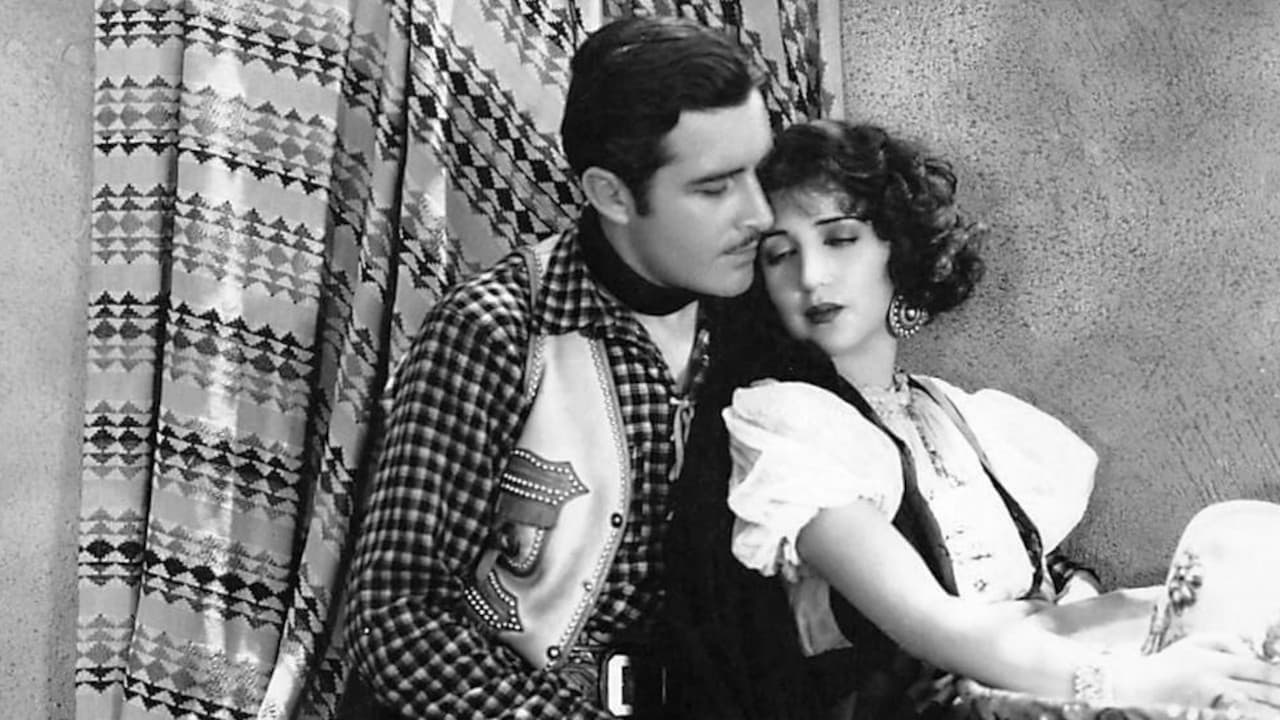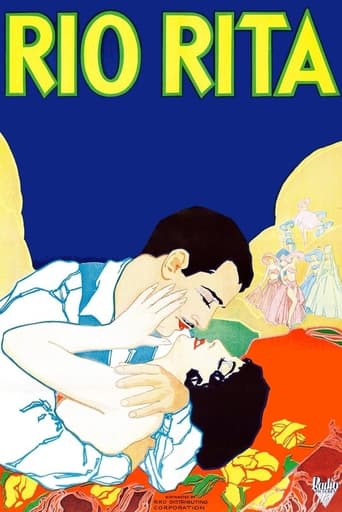

"Rio Rita" is a filmed stage play with a couple of outdoor scenes tossed in. Taken just as a movie it would be a near-flop, but as a historical document it is an essential part of Hollywood's rich past of musical motion pictures. It is also a rare look at a production overseen by Broadway showman nonpareil Florenz Ziegfeld, which most of us have never seen but can only read about.Presumably, the spectacle's the thing with a Ziegfeld show, because Rio Rita's book is just plain goofy and as entertaining as oatmeal. The story is absurd and wanders about for 103 minutes and is saved only by musical interludes and by the comedy team of Wheeler and Woolsey, who are forced to work with some unfunny material but bring much-needed energy to the show. The music is very good, even though my DVD from Warner Archives collection omits the "Kinkajou" song and dance number. I have it on a CD recording and sounds almost like the show's best number - but I can't tell, since it's been left out.Bebe Daniels was excellent but I found John Boles a lumpen and paunchy Texas Ranger, but with a good singing voice. The overall look of the show was somewhat primitive and static, except for the last 20-30 minutes which was shot in Technicolor. I gave the film a rating of 6, which I think is passable (historically speaking) - if you are a serious film fan you should really check it out and make up your own mind. It's what makes horse racing.
... View MoreThis was a huge hit in 1929 and was one of RKO's first film releases. It was based on the successful Ziegfeld 1927 stage show that featured Wheeler & Woolsey, pairing them together for the first time. It also features two-strip Technicolor for the last thirty minutes. There you have it, film history-wise. As for the content of the film? Don't bother, it's terrible. In fact, almost unwatchable. Aside from secondary player Dorothy Lee, an 18 year-old (at the time) ball of personality, the rest of the cast is dull or obnoxious. Dull: leads Bebe Daniels and John Boles. Obnoxious: Wheeler & Woolsey. The story is antique: Rio Grande Mexican gal Rita and her impossible love for Ranger Boles. The music score is almost entirely forgettable and the staginess of the whole thing from dance numbers to solo vocals is quite obvious. Lastly, the comedy team of Wheeler & Woolsey are abominably bad, making one understand quickly how they've become forgotten. Their antics are painful to watch, especially since they're having such a good time being so unfunny. Obviously they're replicating their stage performance at a time when their material might have been considered enjoyable, thus they react as if what they're doing is just killing the audience. 75-plus years later and we're in a different comedy world, admittedly, but I see little in W & W's work in this film to invoke anything more than head scratching or annoyance. And most of their following films are no better. As I said, this film is only of interest for historians, unless you are very easily entertained.
... View MoreI think many of us make the mistake of reviewing films of the transition to sound era from the viewpoint of highlighting the inadequacies of the technology of the period as seen from today, I have recently seen an unrestored Video print of Rio Rita, the quality of which was excellent, the sound was excellent, the two strip colour finale as most will agree was stunning. I found Bebe Daniels characterisation to be endearing and entertaining, her accent didn't grate at all far from it, it fitted her role and she was in fine voice in her first talkie musical, John Boles performance was set very much in the stage style of presentation, he had a fine voice very easy on the ear. Rio Rita is a gem from the late 20's and deserves to be restored 100% to it's former glory when released,filmed head on for most of it's duration, rather like watching a stage show, I see it as a wonderful filmed record of what it was like to actually sit in the Ziegfeld Theatre perhaps and be a member of the first night performance of the show on stage, the nearest we will ever get to actually seeing a Ziegfeld show of the period, and partly in stunning two strip colour. The technical restrictions of the period, static camera's, etc work in the films favour for me, we have an opportunity to see a filmed stage show featuring some of the greatest stars of the period. I would like to suggest when watching film musicals of the late 20's, very early 30's, playing the soundtrack through an equaliser, then play it through your amplifier to good quality speakers, the results can be amazing, tinny soundtracks can suddenly take on a sound quality you had no idea was there! I recommend Rio Rita 8 out of 10 only because my copy though excellent isn't restored,a fully restored Rio Rita would be a wonderful to see and hear.
... View MoreThough Rio Rita has a big reputation among aficionados, I think it's probably due more to its success as a stage vehicle than as a film.Nevertheless, for those who are interested in historical films, I feel Rio Rita serves as a good example of the kinds of obstacles that faced early film makers and actors. As the sound and music was recorded live, there are a number of mistakes, slips and awkward moments. But rather than detract, I think it's interesting to see how the actors and staff negotiated these difficulties. Particularly in the reprise of "Sweetheart We Need Each Other" you can see Dorothy Lee struggling to follow the conductor while Bert Wheeler keeps on distracting her, while Helen Kaiser is clearly trying to follow Lee but both Woolsey and Wheeler keep on getting in her way.Then there are moments that, because the recording was done live, are just over the top. The most hysterical moment has got to be when, after 5 minutes of singing and tap-dancing in a single take, and then after a series of double summersaults, Bert Wheeler literally jumps on Dorothy Lee's back and rides piggy-back while she resumes singing. Wow!And of course, with so few surviving films with two-strip Technicolor, it's always interesting to see how early film makers took advantage of it.
... View More